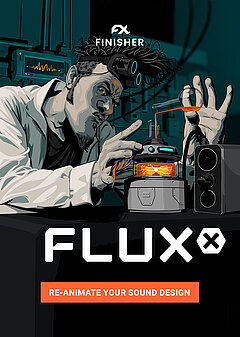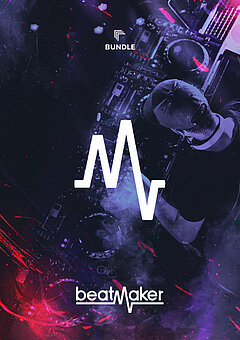How To Make Modern Pop Drums
The writing and production tactics you need to create polished, exciting drums that stand up to your favorite pop songs.
DECEMBER 20TH, 2020
Pop music is constantly changing, and the demands on independent producers to create increasingly professional songs are continuing to rise as music tech improves. Let’s get up to speed and add in the little bits that will push your pop drum production over the edge.
- Basic pop drum patterns
- Mixing and production of pop drums
- How to make your drums interesting
- Make pop drums faster with KANDY
Basic pop drum patterns
Pop drums typically have the most basic pattern you’ll find: kick on 1, snare on 3. When in doubt, this is a good fallback; when you need to build up energy over time, try placing the kick on all beats (1 through 4) as the action ramps up around the drums, optionally triggering the snare on 2 and 4. Here’s how to build drum patterns in KANDY:
Now, you’ll want to add in other auxiliary percussion like hi hats, cymbals, cross sticks, synthesized effects and any other elements that feel right for your song. Think of kick and snare as one unit, and everything else as another. Create an aux percussion rhythm that still “works” when you take away the kick and snare, and then try changing the kick / snare pattern as many times as you like. The more variations that work, the more material you’ll be able to use in your song without the drums getting dull. If you need to change the aux percussion a bit to get it to work here, that’s fine! Go with your instincts, which will continue to improve over time.
Here’s a great in-depth video on creating different pop drum patterns in styles like reggaeton, techno, and future bass:
Mixing and production of pop drums
The first thing you might notice when listening to modern pop is how immaculately polished the entire mix is. The reverb tail of every sound is tapered at the perfect moment, the snare has just the right amount of snap, the cymbals are bright and clean and have zero harshness. Admittedly this takes a lot of practice to achieve, but that’s ultimately what you want to shoot for.
To get that level of polish, you want to spend your time getting the settings on your compressors just right: make the attack long enough that you let the transients (hits) through on the kick and snare, and time the release to be shorter than the time it takes to trigger the sample again, but not too short that the mix gets messy.
EQ out any harshness in the drums, particularly the cymbals and hi hats (they also probably don’t need any audio below 500 Hz, so play aggressively with a high pass filter). If things don’t quite “pop” enough, try boosting the upper frequencies with a high shelf filter. The drums will sound brittle if you overdo this (and you might hurt your ears in the process), so be sure to exercise some caution. Every EQ has a slightly different sound quality, and over time you’ll build up a collection of several you like, each for different purposes. This article from LANDR explains some of the best EQ plugins in detail.
Don’t forget to play with reverb! Depending on what sort of drum kit or sampler you’re using, you may be able to adjust individual reverb levels on all drums in your kit. This is particularly important for electronic drums (which is what pop drums increasingly are these days), because a synthesized kick typically sounds unpleasantly “boomy” when it’s placed in reverb. For acoustic drums, you’ll almost always want to add in a little room ambience to lock the kit together.
How to make your drums interesting
Now here’s where things get juicy! How do you spice things up so you’re not just triggering bland kicks, snares and hi hats?
You can start off by adding toms, claps, claves, and a host of synth percussion between the kick and snare. Keep the kick and snare the same, but add in some extra goodness at your discretion. Feel free to be quite random in your approach, as that’s how you’re going to find some of your favorite drum patterns! A great little trick is to plug all the notes into your sequencer, get something that sounds decent, and then start dragging all notes up or down in batches (while leaving the kick and snare untouched). Most of what you generate from this method will sound bad, yes -- but if you’re working with a good drum kit, you’re bound to come across something that’s at least slightly interesting.
Effects obviously play a huge role in giving your drums an extra “something,” but be careful -- with electronic drums, each part of the kit deserves its own effects. You can record each sample with effects added and add it back in, but if your drum sequencer has the ability to attach different effects to different samples on the fly, that’s typically an easier route.
Spend the time you need to get your kick and snare just right, and everything else will fall into place much more easily. Add enough low end to your kick, and taper the tail so that it doesn’t take up too much space. The snare will typically need some reverb -- and the slower / more spacious the song, the more reverb you’ll likely want to add to fill space in the mix. You can get really creative with the snare reverb, too -- a lot of modern pop uses a long, clean reverb for a bit of a shimmer effect.
Make pop drums faster with KANDY
While you can certainly use a traditional sampler plugin to make the adjustments you need and manually select the samples you want for each song, the pop drums VST Beatmaker KANDY gives you a much faster way to create grooves for modern pop music. All the samples are organized into full kits with effects presets loaded up, perfectly tuned for every single kit you’ll use. While it’s great knowing how to effectively use samplers, KANDY gives you a way to bypass the manual selection process along with hours of fine-tuning the effects on each separate sample.
In KANDY, effects are specifically chosen for each kit and set to just the right amount to polish things up, and every kit has a bunch of aux percussion that’s automatically added into each Style selection. It’s worth learning the core principles behind pop drums, but when you’d rather ask a plugin to do the heavy lifting for you, nothing does the job quite like KANDY!
Whatever tools you decide to use, knowing the principles will always be useful. Give these writing and production techniques a try, and with a bit of practice you’ll get a handle on how to create pop drums that shine on any song.
About the Author
Harry Lodes is a copywriter, marketing consultant and content writer for audio and ecommerce brands. He lives in the Philadelphia area, releasing Eastern/Western hybrid EDM under the artist name KAIRI hearkening back to his roots in Berklee College of Music.
Stay up to date
Sign up and we’ll send you an e-mail with product news and helpful stuff every now and then. You may unsubscribe at any time.
Defy Limits
We develop software solutions that enable people to create, consume and interact with music.




